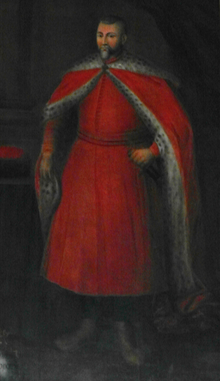
Bochnia is a town on the river Raba in southern Poland, administrative seat of Bochnia County in Lesser Poland Voivodeship. The town lies approximately halfway 38 kilometres (24 mi) between Tarnów (east) and the regional capital Kraków (west). Bochnia is most noted for its salt mine, the oldest functioning in Europe, built in the 13th century, a World Heritage Site and a Historic Monument of Poland.

Margrave Aleksander Ignacy Jan-Kanty Wielopolski was a Polish aristocrat, owner of large estates, and the 13th lord of the manor of Pinczów. In 1862 he was appointed head of Poland's Civil Administration within the Russian Empire under Tsar Alexander II.
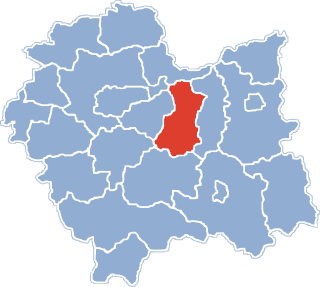
Bochnia County is a unit of territorial administration and local government (powiat) in Lesser Poland Voivodeship, southern Poland. It came into being on January 1, 1999, as a result of the Polish local government reforms passed in 1998. Its administrative seat and largest town is Bochnia, which lies 37 kilometres (23 mi) east of the regional capital Kraków. The only other town in the county is Nowy Wiśnicz, lying 8 km (5 mi) south of Bochnia.
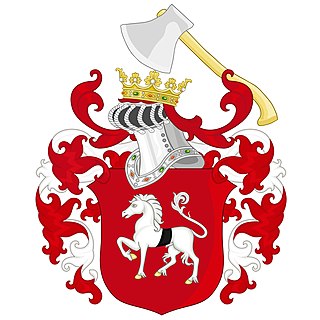
Starykoń is a Polish coat of arms. It was used by several szlachta (noble) families under the Polish–Lithuanian Commonwealth. Notable bearers of this coat of arms include Jan Wielopolski.
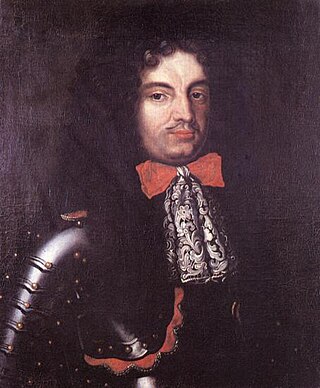
Count Jan Wielopolski was a Polish nobleman, aristocrat, politician and diplomat. Between May 1678 and January 1680, he was also a Polish chancellor.
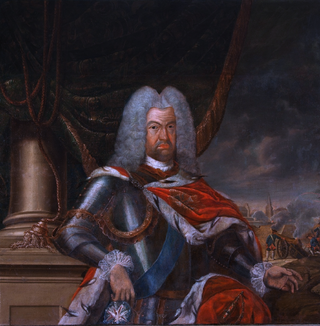
Count Franciszek Wielopolski was a Polish noble (szlachcic).

Zygmunt Andrzej Wielopolski was the President of Warsaw in the 19th century, during the time when Warsaw was part of Congress Poland. He was the son of the Marquis Aleksander Wielopolski and the nephew of Zygmunt Wielopolski (1863–1919), who was vice president of the National Polish Committee in 1914.

The Kraków Voivodeship was a voivodeship (province) in the Kingdom of Poland from the 14th century to the partition of Poland in 1795. Located in the southwestern corner of the country, it was part of the Lesser Poland region and the Lesser Poland Province.
Bochnia Commune is a gmina within Lesser Poland Voivodeship in the south of Poland. It is situated on the borderline between two geographical regions: the Sandomierz Basin in the northern part of the commune's territory, and the Wieliczka Piedmont in the southern part.
Gmina Nowy Wiśnicz is an urban-rural gmina in Bochnia County, Lesser Poland Voivodeship, in southern Poland. Its seat is the town of Nowy Wiśnicz, which lies approximately 8 kilometres (5 mi) south of Bochnia and 40 km (25 mi) south-east of the regional capital Kraków.

Polonia, the name for Poland in Latin and many Romance and other languages, is most often used in modern Polish as referring to the Polish diaspora. However, as can be seen from the image, it was also used as a national personification.

Brzeźnica is a village in the administrative district of Gmina Bochnia, within Bochnia County, Lesser Poland Voivodeship, in southern Poland. The village is approximately 5 kilometres (3 mi) south-east of Bochnia and 40 km (25 mi) east of the regional capital Kraków.

Chełm is a village in the administrative district of Gmina Bochnia, within Bochnia County, Lesser Poland Voivodeship, in southern Poland. It lies approximately 9 kilometres (6 mi) west of Bochnia and 30 km (19 mi) east of the regional capital Kraków.

Nieszkowice Wielkie is a village in the administrative district of Gmina Bochnia, within Bochnia County, Lesser Poland Voivodeship, in southern Poland. It lies approximately 10 kilometres (6 mi) south of Bochnia and 38 km (24 mi) south-east of the regional capital Kraków.
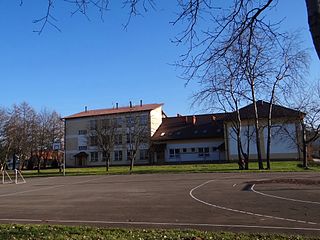
Siedlec is a village in the administrative district of Gmina Bochnia, within Bochnia County, Lesser Poland Voivodeship, in southern Poland. It lies approximately 10 kilometres (6 mi) south-west of Bochnia and 30 km (19 mi) south-east of the regional capital Kraków.

Gdów is a village in Wieliczka County, Lesser Poland Voivodeship, in southern Poland. It is the seat of the gmina called Gmina Gdów. It lies approximately 14 kilometres (9 mi) south-east of Wieliczka and 26 km (16 mi) south-east of the regional capital Kraków.
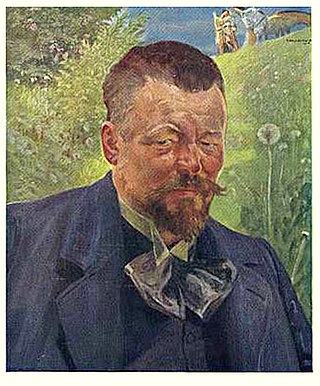
Ludwik Józef Stasiak was a Polish painter, cartoonist, journalist, art historian and publisher. He worked in a wide variety of genres and provided illustrations for magazines such as Bluszcz (Ivy), Kłosy (Ears) and Tygodnik Illustrowany. He was also the author of some popular historical novels.

The Bochnia Salt Mine in Bochnia, Poland, is one of the oldest salt mines in the world and is the oldest commercial company in Poland. The Bochnia salt mine was established in 1248 after salt had been discovered there in the 12th and 13th centuries and became part of the royal mining company, Żupy krakowskie. In 1990, the mine ceased producing salt but remained a tourist attraction.

The House of Wielopolski was a Polish szlachta family, magnates in the 17th and 18th centuries.

Polish Hamlet. Portrait of Alexander Wielopolskiis an oil painting by Jacek Malczewski from 1903, presenting the allegorical grandson Aleksander Wielopolski and two different visions of the fate of the Polish nation.
